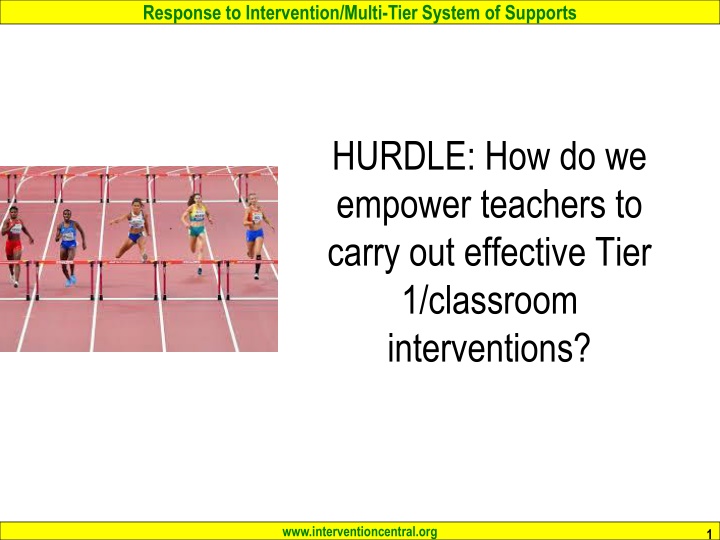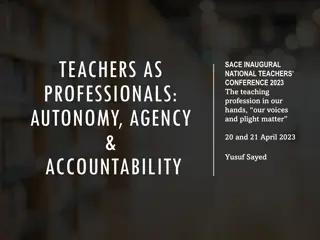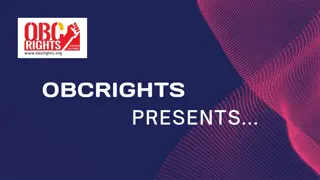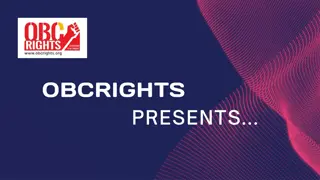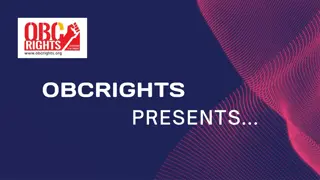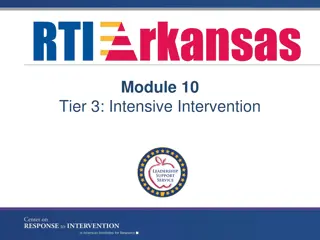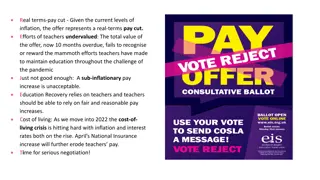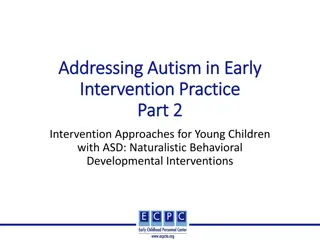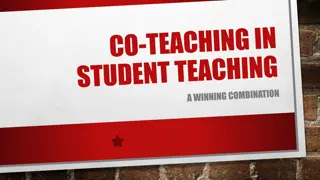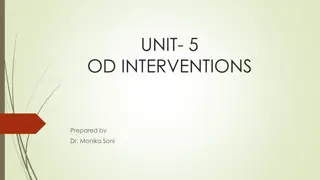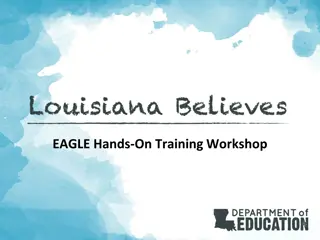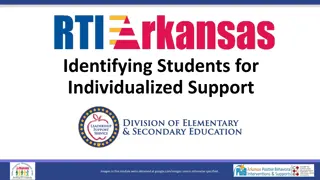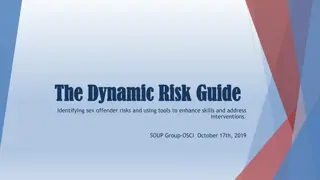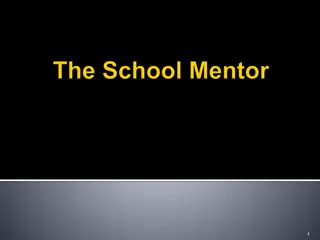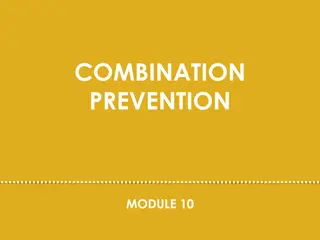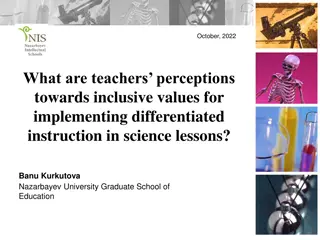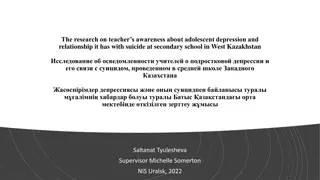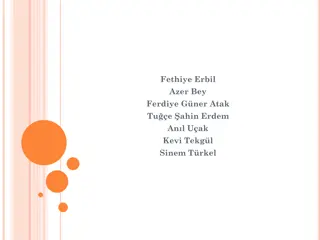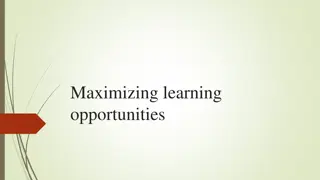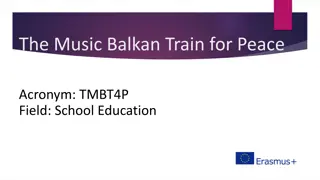Empowering Teachers for Effective Tier 1 Interventions
Explore strategies to empower teachers in carrying out effective Tier 1 classroom interventions, including the role of teachers as Tier 1 providers, essential information collection, expectations as academic first responders, addressing intervention roadblocks, and building high-quality RTI/MTSS Tier 2/3 services.
Download Presentation

Please find below an Image/Link to download the presentation.
The content on the website is provided AS IS for your information and personal use only. It may not be sold, licensed, or shared on other websites without obtaining consent from the author.If you encounter any issues during the download, it is possible that the publisher has removed the file from their server.
You are allowed to download the files provided on this website for personal or commercial use, subject to the condition that they are used lawfully. All files are the property of their respective owners.
The content on the website is provided AS IS for your information and personal use only. It may not be sold, licensed, or shared on other websites without obtaining consent from the author.
E N D
Presentation Transcript
Response to Intervention/Multi-Tier System of Supports HURDLE: How do we empower teachers to carry out effective Tier 1/classroom interventions? www.interventioncentral.org 1
Response to Intervention/Multi-Tier System of Supports MTSS QUESTION: What is the classroom teacher s role as a tier 1 provider? What information do they need to collect on their students to be included in their tier 1 file? www.interventioncentral.org 2
Response to Intervention/Multi-Tier System of Supports Activity: What Are Your Expectations of the Teacher as Academic First Responder ? (Handout; p. 10) Imagine a teacher who has a student experiencing ongoing, serious academic difficulty in a class or course. For each of these items, decide what you believe should be the minimum expectations for that teacher to respond to this profile of struggling student. Elements of Effective Classroom Academic Intervention 1. Describe the student academic problem(s) clearly and specifically 2. Find/use effective academic- intervention strategies. 3. Use instructional adjustments/ accommodations as appropriate. 4. Record (write down) intervention efforts. 5. Collect data on whether academic performance improves 6. Communicate with the student. 7. Communicate with parent(s). www.interventioncentral.org
Response to Intervention/Multi-Tier System of Supports Classroom Intervention Roadblocks Teacher skills: Teachers do not identify and prioritize student concerns in clear and specific terms. System: Schools lack objective risk profiles to ensure equity in identifying students eligible for Tier 1/classroom interventions (e.g., being considered for retention; failing a course in second consecutive marking period). System: Teachers lack an easily accessible intervention bank with sufficient ideas to address most common classroom concerns. System: Teachers lack a supportive setting (e.g., consultant, instructional team meeting, etc.) to discuss interventions. System: Schools lack a single, shared form/format to document (put into writing) Tier 1/classroom interventions. System: Tier 1/classroom interventions are not routinely archived for long-term storage, indexing, and retrieval. www.interventioncentral.org 4
Response to Intervention/Multi-Tier System of Supports HURDLE: How do we build high-quality RTI/MTSS Tier 2/3 services? www.interventioncentral.org 5
Response to Intervention/Multi-Tier System of Supports MTSS QUESTION: Who is qualified to teach Rti classes? What should those classes look like? How should they be structured? What is an effective class size? www.interventioncentral.org 6
Response to Intervention/Multi-Tier System of Supports MTSS QUESTION: Specific strategies, activities for students, places to get resources etc. How much time is spent on a student who has started tier 3? Does this have to be one on one with this student? How long must tier 3 be done before a student can be classified? www.interventioncentral.org 7
Response to Intervention/Multi-Tier System of Supports Tier 2 Academic Interventions: Quality Indicators 1. Use interventions supported by research. 2. Cap group size. 3. Schedule adequate time. 4. Put plans in writing. 5. Monitor the intervention. 6. Measure intervention integrity. 7. Adopt entrance/exit criteria. 8. Use objective data sources. 9. Select Screeners that identify the right students 10.Appoint a Data Analysis Team. www.interventioncentral.org 8
Response to Intervention/Multi-Tier System of Supports Tier 2 Services Roadblocks System: Tier 2/3 interventionists primarily reteach/reinforce classroom instruction rather than identifying and fixing off-grade-level skill deficits. System: Tier 2/3 interventionists do not use programs or practices supported by research. System: Tier 2/3 interventionists do not put their student academic- intervention plans in writing or fail to adequately document those plans. System: The school uses a range of data sources of uneven quality to recruit students for Tier 2/3 services. System: The school does not evaluate Tier 2/3 performance every 6-10 weeks to prevent students from spending too long in ineffective interventions. www.interventioncentral.org 9
Response to Intervention/Multi-Tier System of Supports HURDLE: How do we collect data to track progress on MTSS intertventions? www.interventioncentral.org 10
Response to Intervention/Multi-Tier System of Supports MTSS QUESTION: Developing goals and assessments to ensure RTI is successful, and best practices for tracking those goals www.interventioncentral.org 11
Response to Intervention Workshop PPTs and handout available at: http://www.interventioncentral.org/data www.interventioncentral.org
Response to Intervention/Multi-Tier System of Supports Creating a Classroom Progress-Monitoring Plan: 7 Steps 1. What is the skill or behavior that you are measuring? 2. What data-collection method will best measure your target skill or behavior? 3. How long will your intervention last? 7. How does the student s actual performance compare with the outcome goal? 4. What is the student s baseline performance? 6. How often will you collect data? 5. What is the student s outcome goal? www.interventioncentral.org 13
Response to Intervention/Multi-Tier System of Supports HURDLE: How do we create staff support for MTSS? www.interventioncentral.org 14
Response to Intervention/Multi-Tier System of Supports Engaging the Reluctant Teacher: Seven Reasons Why Instructors May Resist Implementing Classroom RTI Interventions 1. Lack of Skills. Teachers lack the skills necessary to successfully implement academic or behavioral interventions in their content-area classrooms. 2. Not My Job. Teachers define their job as providing content-area instruction. They do not believe that providing classwide or individual academic and behavioral interventions falls within their job description. 3. No Time. Teachers do not believe that they have sufficient time available in classroom instruction to implement academic or behavioral interventions. 4. Status Quo Bias. Teachers are comfortable with the current situation and do not sense a need to change their professional routines. 5. Loss of Classroom Control. Teachers worry that if they depart from their standard instructional practices to adopt new classwide or individual academic or behavior intervention strategies, they may lose control of the classroom. 6. Unmotivated Students . Teachers are unwilling to invest the required effort to provide academic or behavioral interventions for unmotivated students because they would rather put that time into providing additional attention to well-behaved, motivated students who are more deserving . 7. The Magic of Special Education. Content-area teachers regard special education services as magic . According to this view, interventions provided to struggling students in the general-education classroom alone will be inadequate, and only special education services have the power to truly benefit those students. www.interventioncentral.org 15
Response to Intervention/Multi-Tier System of Supports MTSS and Systems-Change: 3 Catalysts 1. Establish an MTSS Leadership Team. 2. Update your district MTSS Plan. 3. Decide on the MTSS PD content to share with staff this year and develop a training calendar. www.interventioncentral.org 16
Response to Intervention Establish an MTSS Leadership Team. www.interventioncentral.org
Response to Intervention/Multi-Tier System of Supports What is the Purpose of the MTSS Leadership Team? The MTSS Leadership Team guides the overall MTSS process. The group meets periodically (e.g., monthly) on an ongoing basis to evaluate the MTSS project, shape its future direction, determine what resources the project requires, and allocate those resources. The MTSS Leadership Team also ensures that a standard MTSS process is followed by everyone in the school. www.interventioncentral.org 18
Response to Intervention/Multi-Tier System of Supports Setting Up & Launching an MTSS District Leadership Team (pp. 8-9) 1. Recruit your Team, to include key stakeholders who can contribute to developing a district MTSS plan. 2. Schedule regular meetings (e.g., monthly). 3. Compare the best-practice MTSS model to current district MTSS practices to identify strengths and challenges. 4. Write an MTSS district plan outlining how at-risk students move progressively through the intervention Tiers. 5. Select a manageable number of MTSS next-step goals to concentrate on during the current school year. 6. Meet regularly as a Leadership Team to monitor MTSS implementation & resolve Qs and challenges that arise. Handout p. 18 www.interventioncentral.org 19
Response to Intervention Update your MTSS Building/District Plan. www.interventioncentral.org
Response to Intervention/Multi-Tier System of Supports Your District MTSS Plan: Updating the Roadmap Getting your current MTSS vision down in writing is a crucial first step in revising your MTSS model. Your MTSS Leadership Team meets to reach consensus on how Tiers 1, 2, and 3 will operate. Your plan locks in those expectations as a shared roadmap for everyone to follow. Your district plan can also include realistic timelines for implementation (e.g., Tier 2 changes will be made during the 2023-24 school year) to avoid taking on too much change at one time. www.interventioncentral.org 21
Response to Intervention Decide on the MTSS PD content to share with staff this year and develop a training calendar. www.interventioncentral.org
Response to Intervention/Multi-Tier System of Supports Preparing Teachers for MTSS: 4 Steps 1. Offer MTSS information to teachers in a series of short presentations or discussion forums. 2. Present MTSS as a coordinated, schoolwide approach to address long-standing teacher concerns about struggling students. 3. Solicit teacher input when building your school s MTSS model. 4. Link all significant school and district initiatives to MTSS. www.interventioncentral.org 23
Response to Intervention/Multi-Tier System of Supports MTSS and Systems-Change: 3 Catalysts 1. Establish an MTSS Leadership Team. 2. Update your district MTSS Plan. 3. Decide on the MTSS PD content to share with staff this year and develop a training calendar. www.interventioncentral.org 24
